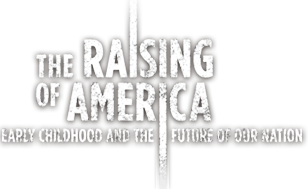Utah Invests in Preschool
to watch purchased videos
Add to Your Favorites
Remove from Your Favorites
Clip Transcript
NARRATOR: Nationwide, special education is provided for children with developmental delays. In Utah, the costs were spiraling. When Senator Osmond went looking for solutions, one school district stood out. Granite District in Salt Lake City is large—and many of its families live in extreme poverty. In 2006, the district decided to invest in high-quality early education, like Perry Preschool had 40 years earlier.
Brenda Van Gorder, Director of Preschool Services, Granite School District:
Children coming from at-risk family situations, often look like children who have disability, and yet what they really have is a lack of opportunity.
NAR: Many of these kids come from homes where English is not spoken, and in the past, would have been steered to special education.
Utah Republican State Senator Aaron Osmond:
What impressed me most about their preschool program was how engaged these young children were in the educational process and how organized that the entire set-up was. These teachers knew exactly what was going on, the kids knew what was going on, and they were participating in the process.
Brenda Van Gorder:
I always tell our staff that I know that we’re right on target, and the kids are right there with you, when they’re kind of coming up out of their seats, and they’re leaning forward and want to get to the teacher. We know that we’ve got them engaged in an activity, and when you’re engaged, you’re learning.
NAR: The children were given standardized tests at the start of preschool and their progress has been carefully calculated. 238 children—a third of all tested—scored so low they would likely need special education when entering elementary school. But after two years in Granite’s high-quality early education program, only 11 of those 238 students were assigned to special ed.
NAR: Jason, Rey, Diego and Maria were among the low scoring students. They are in 5th grade now, and have been testing as well in math and language arts as the kids in high-income schools.
Jason, a 5th grade student in the Granite School District:
The first time I did it, I got 11 minutes and 26 seconds. And the second time I got 8 minutes.
Rey, a 5th grade student in the Granite School District:
At first when he gives us the homework, I look at it, and I think, do I know this or do I not? Will I need help or will I just do it by myself? So once I get home, I’ve already thought about it.
Linda Hart, a teacher in the Granite School District:
How many of you are planning to get that alumni award?
Brenda Van Gorder:
All of these four children were in a range where they were potentially eligible for special education at that moment…
Rey:
My mom wanted to move me to another school, but I’m like,No please—please no!
Brenda Van Gorder:
We didn’t put them in special ed.
Janis Dubno, Senior Policy Analyst, Voices for Utah Children:
We found that over four years that the state alone saved 1.4 million dollars, and if you include the federal savings, there was an additional savings of 1.1 million dollars, for a total combined state and federal savings of 2.5 million dollars.
Senator Aaron Osmond at hearing:
We have an opportunity to mainstream these students and save significant dollars down the road. And there is the statistical historical evidence that it will work.
NAR: In the face of ongoing opposition, Senator Osmond continues to push forward two bills, one to start more pilot preschools, the other to keep them all sustainable.
Senator Aaron Osmond:
The concept of sustainable financing is allocating budget right now as a set-aside to be able to reinvest again in the future based on future savings that you hope that you will realize, thus creating a kind of cyclical nature that there is always funding available for this particular program. The reality is though that we still need to prove to the legislature and to many groups in the state that that investment is worth it.
Utah State Senator Wayne Niederhauser at hearing:
It seems like we do this early intervention, but it seems to washout by the time students get in the seventh or eighth grade. And let’s…I’d like to find out why that’s the case.
Brenda Van Gorder at hearing:
We’re not seeing the washout. Not only are they not washing out, they’re still at the top of their class. They left preschool and entered kindergarten at the top, and they are maintaining at the top.
NAR: And if they’re maintaining at the top, Granite district’s preschool program is reversing a seemingly intractable national trend, where the achievement gap between high-income and low-income children has widened by 40% since 1970.
Janis Dubno:
A 22-point gap between low-income and high-income schools in the Granite School District in language arts was reduced to a five-point gap.
Senator Aaron Osmond:
It’s so compelling you cannot avoid having the conversation:Why not invest early?


